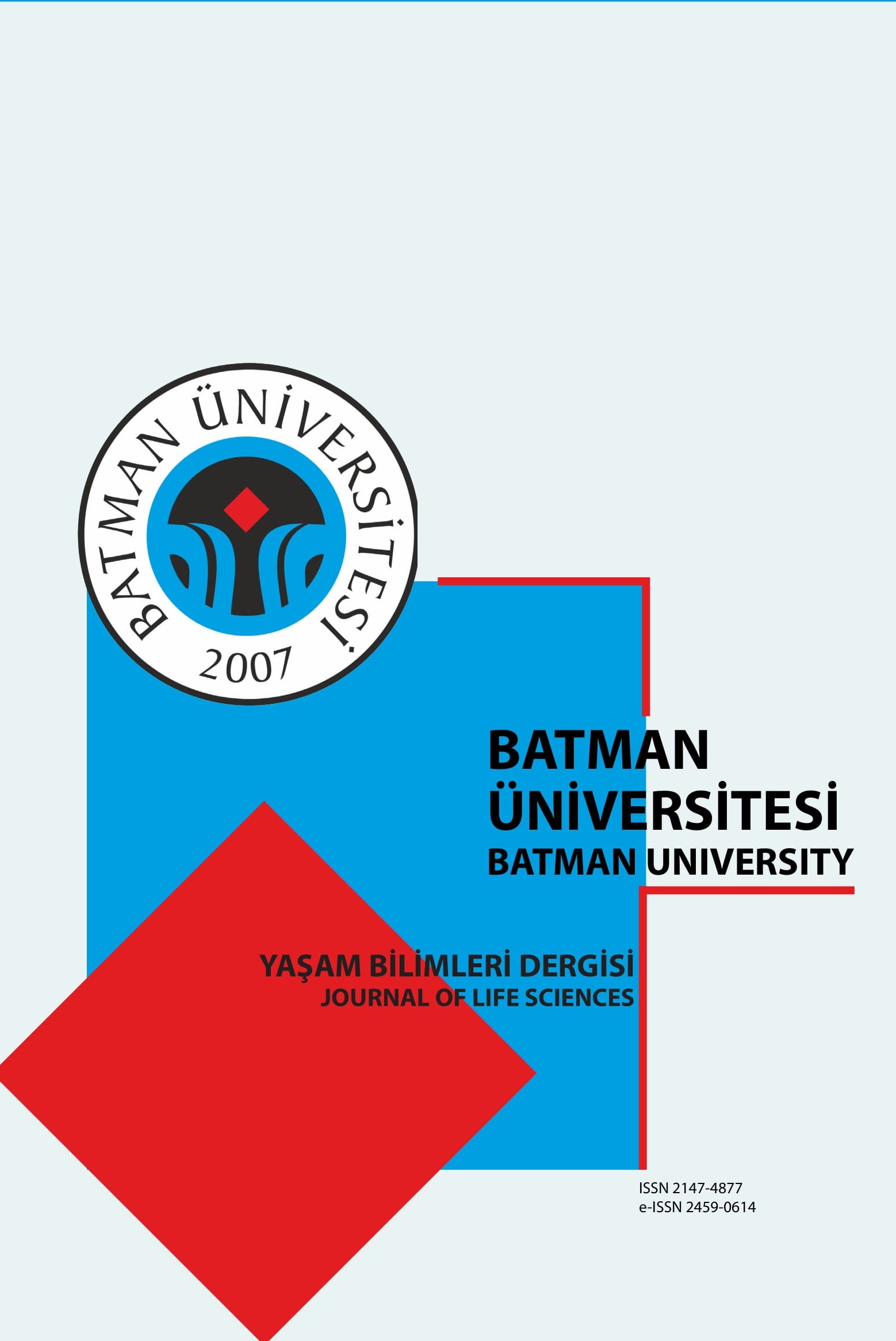Farklı Talaş Kırıcı Formlarının Esas Kesme Kuvvetlerine Etkisinin Matematiksel Modellenmesi
Talaş kırıcı formlar, ana kesme kuvveti, ilerleme hızı, matematiksel analiz
Mathematical Modeling of the Effect of Chip Breaker Forms on Cutting Forces
Chip breaker forms, Main cutting force, Feed, Mathematical analysis,
___
- Baday, Ş., (2016). Küreselleştirme Isıl İşlemi Uygulanmış AISI 1050 Çeliğin Tornalanmasında Esas Kesme Kuvvetlerinin Yapay Sinir Ağları İle Modellenmesi. Technological Applied Sciences,11(1), 1-9.
- Baday, Ş., Başak, H., ve Güral, A. (2016). Analysis of spheroidized AISI 1050 steel in terms of cutting forces and surface quality. Kovove Mater., 54, 315-320.
- Başak, H., ve Baday, Ş. (2016). Küreselleştirilmiş orta karbonlu bir çeliğin işlenmesinde, kesme parametrelerinin kesme kuvvetleri ve yüzey pürüzlülüğüne etkilerinin regresyon analizi ile modellenmesi. Pamukkale Üniversitesi Mühendislik Bilimleri Dergisi, 22(4), 253-258.
- Budak, E., Altintaş, Y., ve Armarego, E.J.A. (1996). Prediction of Milling Force Coefficients From Orthogonal Cutting Data. Journal of Manufacturing Science and Engineering, 118 (2), 216-224.
- Chen, W. (2000). Cutting forces and surface finish when machining medium hardness steel using CBN tools. International Journal of Machine Tools and Manufacture. 40, 455-466.
- Gürbüz, H., Kurt, A., ve Şeker, U. (2012). Investigation of the effects of different chip breaker forms on the cutting forces using artificial neural networks. Gazi University Journal of Science, 25(3), 803-814.
- Gürbüz, H., Kurt, A., Çiftçi, İ., ve Şeker, U. (2011). The influence of chip breaker geometry on tool stresses in turning. Strojniški vestnik-Journal of Mechanical Engineering,57(2), 91-99.
- Gürbüz, H., Kurt, A., Korkut, İ., ve Şeker, U. (2007). The experimental investigation of the effects of different chip breaker forms on the cutting forces. Advanced Materials Research, 23, 191-194.
- Gürbüz, H. (2006). Tornalamada talaş kırıcı geometrisinin takım gerilmelerine etkisi. Yüksek Lisans Tezi, Gazi Üniversitesi, Ankara.
- Hamid, Y., Mohamed, A., Meddour, I., Girardin, F., ve Mabrouki, T. (2017) On the Modeling of Surface Roughness and Cutting Force when Turning of Inconel 718 Using Artificial Neural Network and Response Surface Methodology: Accuracy and Benefit. Periodica Polytechnica Mechanical Engineering , Vol. 61 (1), 1-11.
- Kratochvíl, J., Petrů, J., Pagáč, M., Holubják, ve J., Mrazik J. (2017). Effect of Chip Breakers on The Cutting Force During The Machining of Steel C45. Advances in Science and Technology Research Journal, 11 (1), 173-178.
- Lalwani, D.I., Mehta, N.K., ve Jain, P.K. (2008). Experimental investigations of cutting parameters influence on cutting forces and surface roughness in finish hard turning of MDN250 steel. Journal of Materials Processing Technology, 206, 167-179.
- Lotfi, M., Farid, A.A., ve Soleimanimehr, H. (2015). The effect of chip breaker geometry on chip shape, bending moment, and cutting force: FE analysis and experimental study. The International Journal of Advanced Manufacturing Technology, 78, (5-8), 917–925.
- Meral, G., Dilipak, H., ve Sarıkaya, M. (2011). AISI 1050 malzemenin delinmesinde ilerleme kuvvetleri ve yüzey pürüzlülüğünün regresyon analiziyle modellenmesi. Tübav Bilim Dergisi, 4(1), 31-41.
- Mesquita, R.M.D., ve Barata Marques, M.J.M. (1992). Effect of chip-breaker geometries on cutting forces. Journal of Materials Processing Technology. 31 (1-2), 317-325.Montgomery, D.C. (2012). Design and Analysis of Experiments Sixth Edition, John Wiley & Sons,
- Nas, E., Samtaş G., ve Demir, H. (2012). CNC Frezelemede Yüzey Pürüzlülüğüne Etki Eden Parametrelerin Matematiksel Olarak Modellenmesi. Pamukkale Üniversitesi Mühendislik Bilimleri Dergisi, 18(1), 47-59.
- Özlü, B., Demir, H. ve Nas, E. (2014). Cnc Tornalama İşleminde Yüzey Pürüzlülüğü ve Kesme Kuvvetlerine Etki Eden Parametrelerin Matematiksel Olarak Modellenmesi. İleri Teknoloji Bilimleri Dergisi, 3, 75-86.
- Rao, C.J., Nageswara, R.D., ve Sriharic Chen, P. (2013). Influence of Cutting Parameters on Cutting Force and Surface Finish in Turning Operation. Procedia Engineering. 64, 1405-1415.
- Rao, R.V. (2011). Advanced Modeling and Optimization of Manufacturing Processes, Springer.
- Stephenson, D.A., ve Agapiou, J.S.(2016). Metal Cutting Theory and Practice Third Edition, CRC Press.
- Yılmaz, B., Karabulut, Ş., ve Güllü, A. (2018). Performance analysis of new external chip breaker for efficient machining of Inconel 718 and optimization of the cutting parameters. Journal of Manufacturing Processes, 553-563.
- ISSN: 2147-4877
- Yayın Aralığı: Yılda 2 Sayı
- Başlangıç: 2012
- Yayıncı: Batman Üniversitesi
Daimi ve Sıkıştırılamaz Boru Akışında Giriş Uzunluğunun Sayısal Analizi
Batman İli Köy Tavukçuluğunun Durumu
Seçkin GÜNGÖRDÜ, Mehmet Fatih ÇELEN
Japon Bıldırcını (Coturnix coturnix japonica) Rasyonlarında Pomza ve Tüf Kullanabilme Olanakları
Cemal BUDAĞ, Mehmet Fatih ÇELEN, Tolga DEPÇİ
Farklı Talaş Kırıcı Formlarının Esas Kesme Kuvvetlerine Etkisinin Matematiksel Modellenmesi
